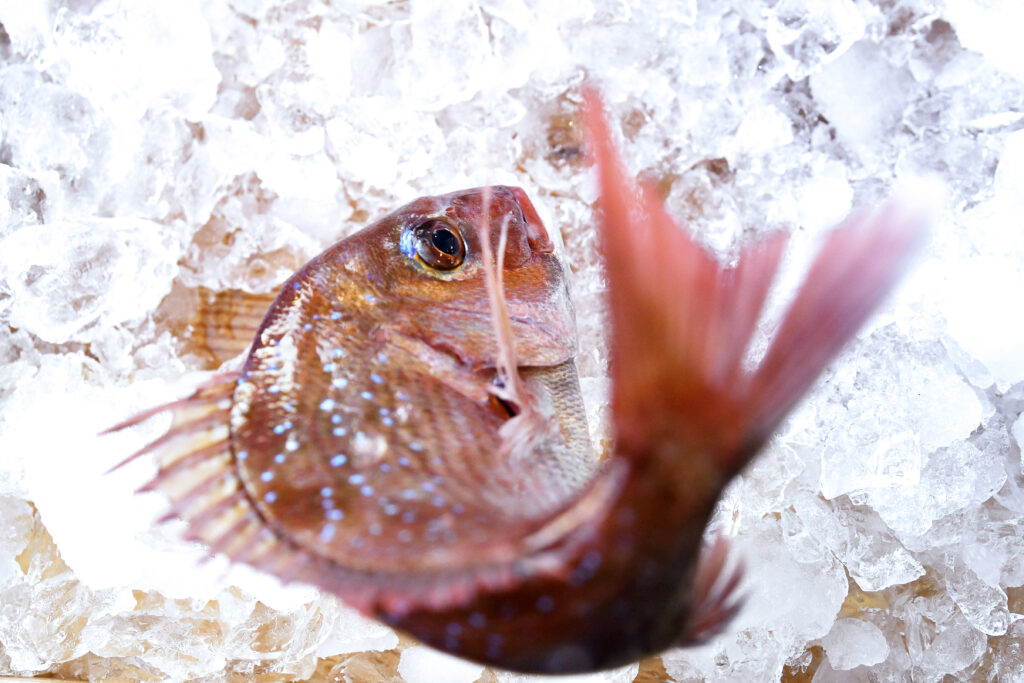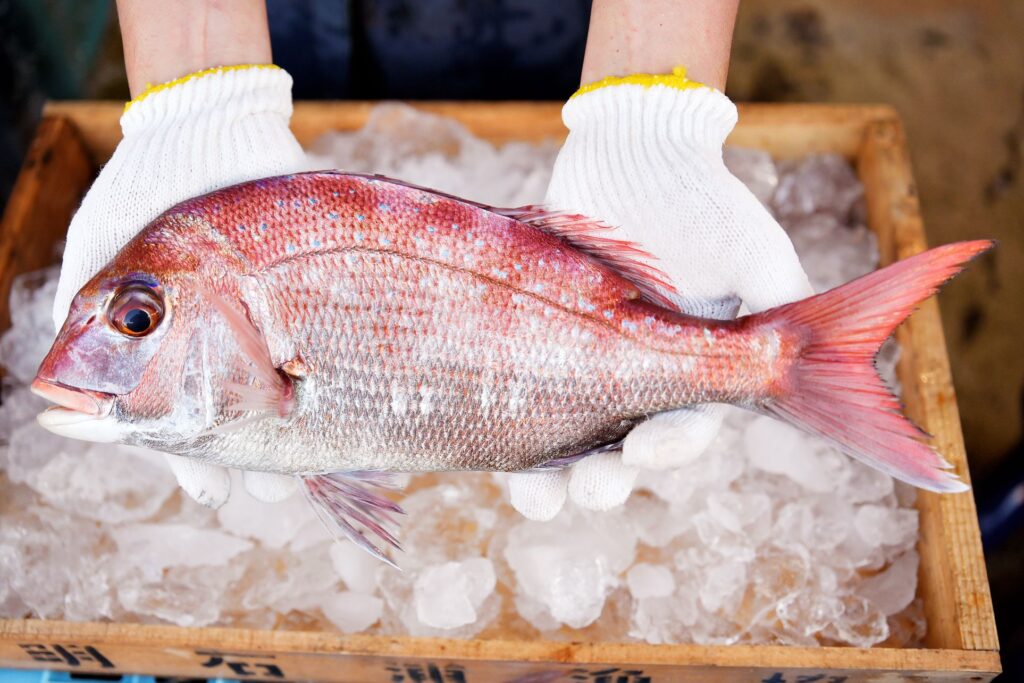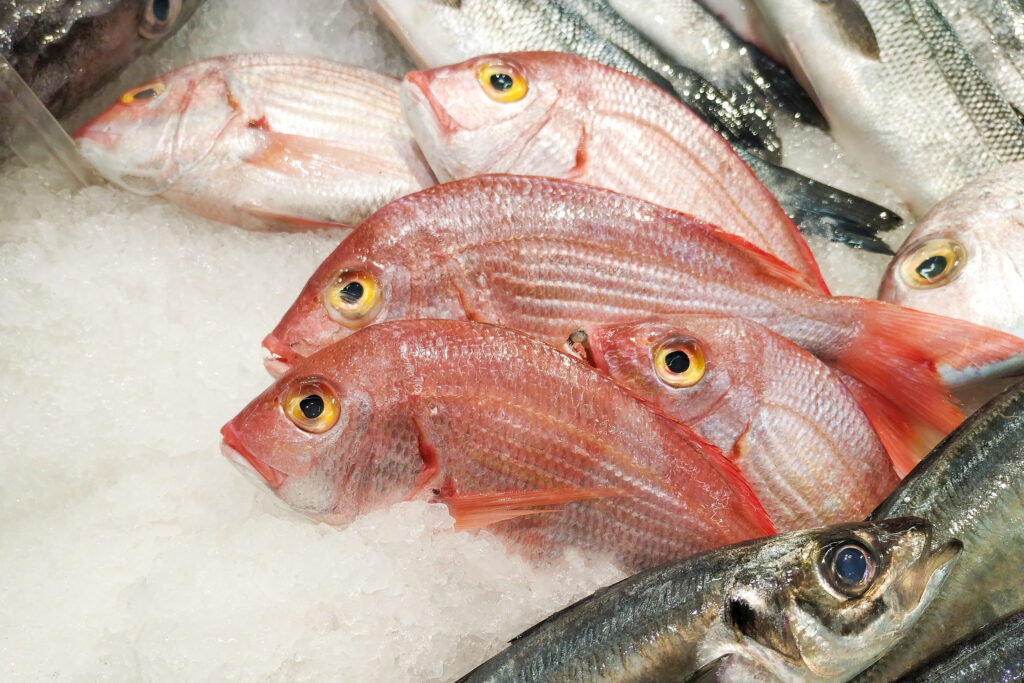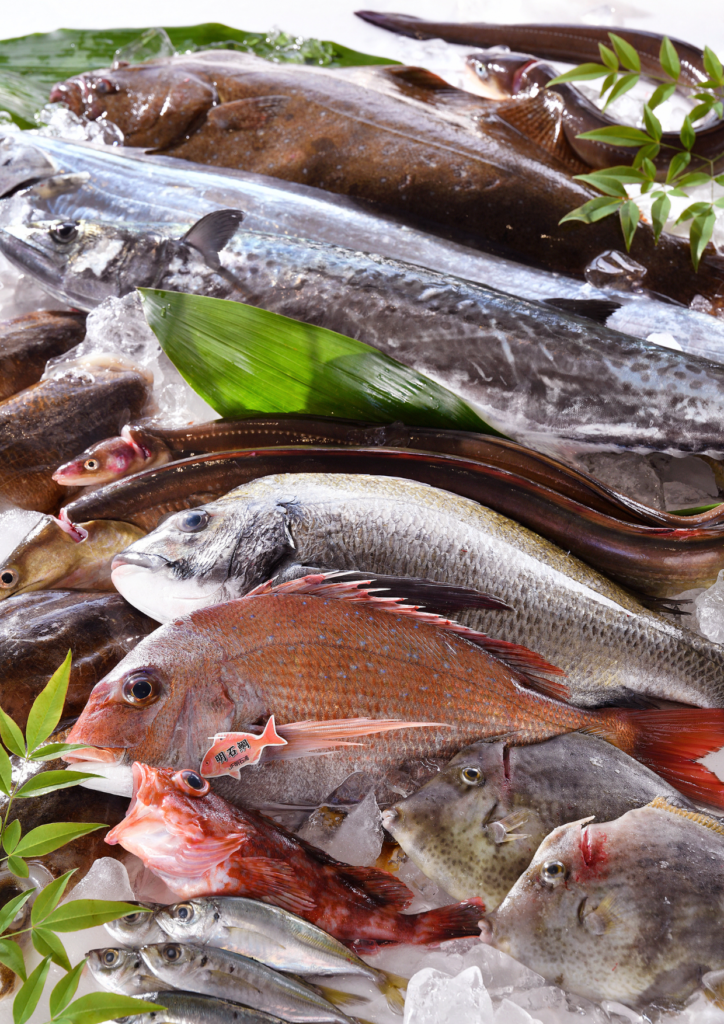Akashi Seafood Wholesalers Cooperative Association
What is the Akashi Seafood Wholesale
Cooperative?
テキストが入ります。テキストが入ります。テキストが入ります。テキストが入ります。
テキストが入ります。テキストが入ります。テキストが入ります。テキストが入ります。
テキストが入ります。テキストが入ります。テキストが入ります。テキストが入ります。

Overview
| Name | Federation of Akashi Seafood Wholesalers Cooperative Association |
| Address | 2029-1, Fujie, Akashi City, Hyogo, 673-0044 (Located within the Akashi City Public Wholesale Market) |
| Founded | 17 May 1971 |
| Represetative Officer | Yoshiaki Kawasaki, Chairperson |
| Membership | 15 companies (as of FY2024) |
| Key Activities | – Collective procurement of fresh fish, shellfish, frozen products, and other items handled by member companies. – Coordination of agreements related to member business operations. – Improvement of management practices and technical skills for member businesses, and promotion of knowledge related to cooperative operations through information dissemination. – Implementation of welfare and support programs for the benefit of members. etc |
The Secrets Behind Akashi’s Delicious Seafood:
A Perfect Blend of Nature and Expertise
-1024x683.jpg)
The Swift Currents of Akashi Strait
Located near the northern tip of Awaji Island, the Akashi Strait connects the Seto Inland Sea to Osaka Bay.
This vital waterway is known for its narrow width, deep waters, and rapid currents. These swift currents are said to “train” the fish, resulting in firmer, tastier flesh that is highly prized.
Nutrient-Rich Waters
The Seto Inland Sea near Akashi benefits from its unique geography. With calm waves and close proximity between mountains and the sea, rivers bring nutrient-rich water that nourishes the marine ecosystem. These nutrients promote plankton growth, which in turn supports an abundance of fish and shellfish.
The area’s natural richness is further enhanced by “Shikanose” a shallow seabed with clean, sandy bottoms ideal for spawning small fish. This vibrant marine environment supports a diverse food chain, making the seafood here particularly flavorful.
-1024x683.jpg)

Unmatched Freshness Through Advanced Techniques
Akashi has long been renowned as a premier fishing ground. Fishermen use methods tailored to each specie, leveraging their proximity to the fishing port to transport live fish directly to the market.
From traditional techniques like ike-jime (a method to preserve freshness and flavor) to innovative handling processes, the fishermen, fishery cooperatives, and wholesalers have mastered the art of maintaining top-tier freshness. Each fish is carefully selected by skilled experts, ensuring only the best reaches consumers. This meticulous attention to detail is what elevates Akashi’s seafood to exceptional levels of taste and quality.
The Akashi Brand: A Testament to Excellence Thanks to its abundant natural environment and the passion of those involved in fishing and distribution, the “Akashi Brand” has earned nationwide acclaim. This fusion of nature’s bounty and human expertise continues to set the standard for premium seafood in Japan and beyond.
Akashi Fish




Initiatives

School Meal Program
Akashi City is blessed with the abundant seafood of the Seto Inland Sea. While the trend of declining fish consumption continues, we hope to encourage children to enjoy delicious fish.
To this end, our cooperative collaborates with local middle schools in Akashi City by providing fresh fish for school lunches several times a year.
_page-0001-724x1024.jpg)
Fish Culture Festival
On 4 Nov., 2024, during “Good Fish Week” (3 Nov.– 7 Nov.), “The Fish Culture Festival Akashi” was held at the Akashi City Public Wholesale Market.
Our cooperative participated in the event, supporting various activities, including a “Hands-On Fish Pool” that featured large fish such as sunfish and tuna, delighting both children and adults alike. We are already looking forward to the next event!
-730x1024.jpg)
Akashi Fish Promotion Council
The council is composed of wholesalers and intermediary wholesalers based in the Akashi City Public Wholesale Market. Its mission is to promote and raise awareness of seafood consumption, encouraging more people to enjoy delicious marine products.
Market products




Initiatives for a Bountiful Sea
The Seto Inland Sea, including the waters around Akashi, has long been recognized as a “bountiful sea,” rich in nutrients and home to diverse marine life. However, in the 1960s, industrial pollution led to severe water quality degradation, prompting significant efforts from the 1970s onward to restore a “clean sea” through initiatives such as wastewater treatment regulations. These efforts successfully improved water quality.
Yet, in recent years, new challenges have arisen, including a decline in fishery yields. A key factor behind this issue is believed to be a shortage of nutrients, such as nitrogen and phosphorus, in the water. This nutrient deficiency has caused phenomena like “color fading” in nori seaweed, where the seaweed leaves turn yellowish, impacting one of Hyogo Prefecture’s most vital aquaculture products. Similarly, the dramatic reduction in the catch of sand lance (ikanago) is linked to the decreased availability of zooplankton, a critical food source. This lack of nutrients has disrupted the marine food chain, shrinking the pyramid that sustains life in the sea.
To address these challenges, fishers are collaborating with government bodies, research institutions, and other industries to revive the richness of the sea.
